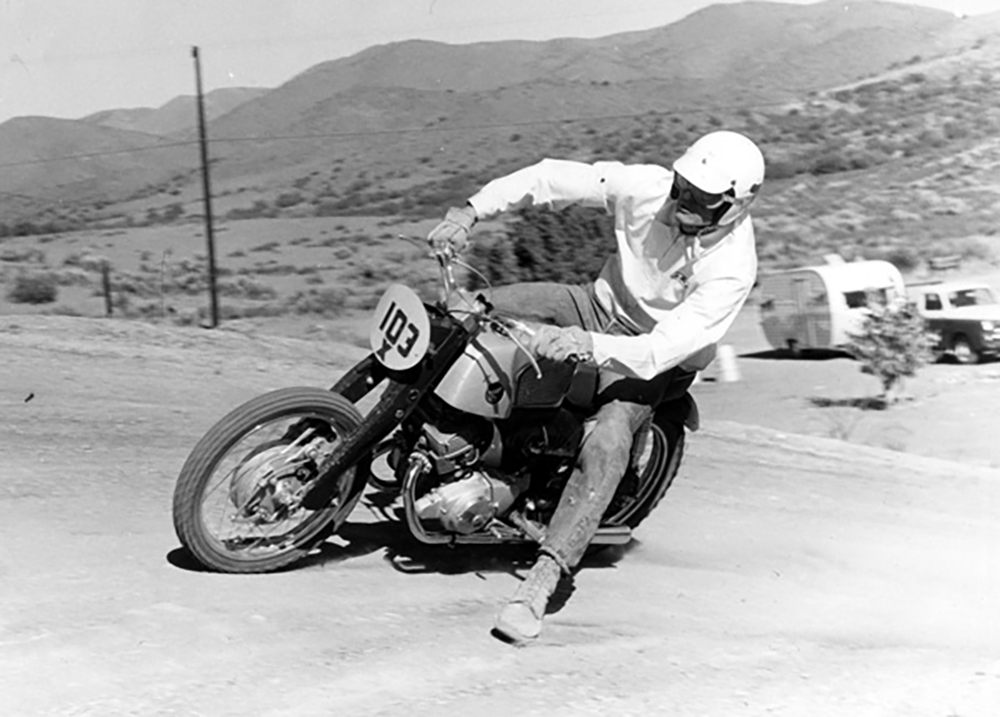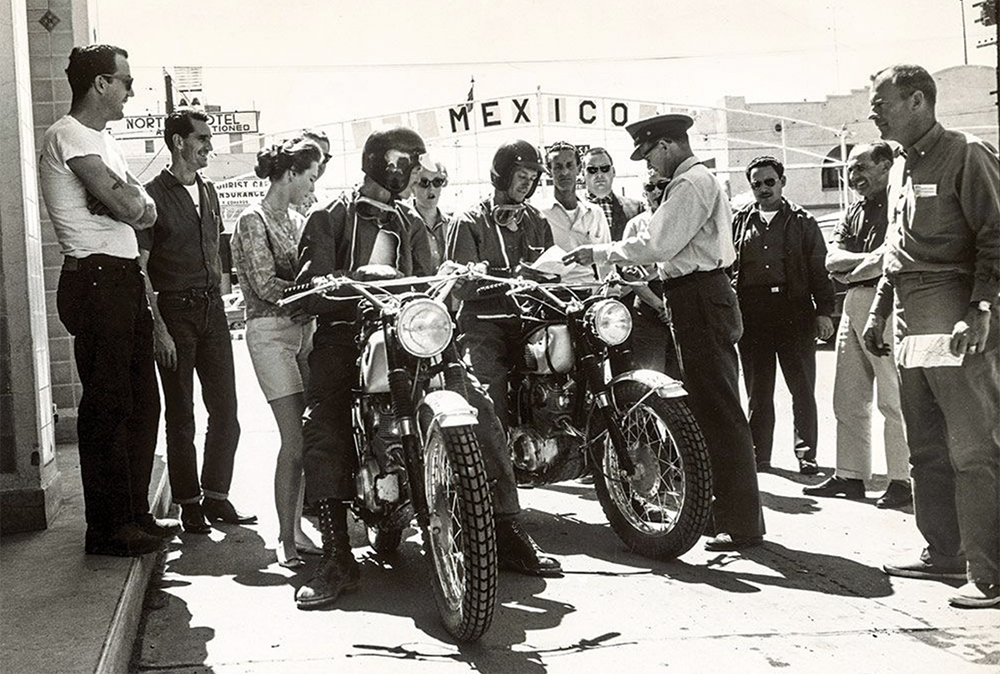
Maybe it is just an ageing thing, but the more I look at the weirdness of the world we are currently living in I find myself reminiscing more about days of yore when so much simply made more sense. Bikes were simple and riders had a “run what you brung” approach. In today’s age of specialisation, where you get a bike for absolutely every application, it is refreshing to see how we rode 60 years ago. This specialisation has been driven to some extent by burgeoning consumerism and the availability of credit, which has steered individuals and countries down a rabbit hole of almost incomprehensible debt.
In the America of the early 1960s, things were somewhat different. It was a decade of change. Civil Rights movements began making their voices known. The post-WW2 Baby Boomers made their presence felt with a message of peace, love, and rock ‘n roll. It was the age of the Beatles, Janis Joplin, and Jimi Hendrix. Timothy Leary, an American Psychologist, was advocating the use of LSD and other mind-bending drugs to a young and impressionable audience who were becoming increasingly anti-establishment. It was also essentially the first operational year for a motorcycle force that would change the bike landscape in the US, forever. American Honda.
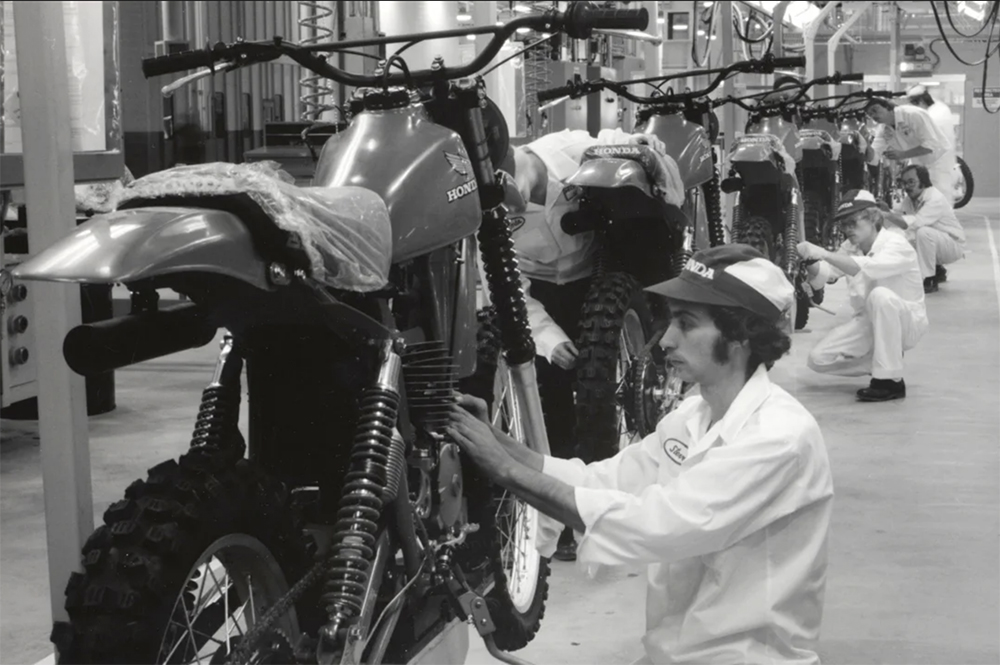
With hindsight, it was probably the right time to come to market with a motorcycle offering from Japan. The anti-Japanese sentiment post-WW2 had calmed, and American society was willing to experiment with new offerings. The question plaguing potential buyers was how reliable and durable these Hondas, termed “Jap Scrap” by some, were. American Honda came up with a plan that was so audacious and even far-fetched that it was amazing that it ever happened. Let’s take two Honda CL72 Scramblers and see if they can survive 1000 miles of abuse, riding them down the Baja Peninsular from Tijuana to La Paz.
Now back in ‘62, this was serious stuff. There were virtually no main roads but predominantly jeep and single tracks riddled with gnarly sand washes. In places, you would do some cross-country across the desert terrain to link up tracks. A significant problem was zero infrastructure for the better part of the ride. No fuel stations presented a huge logistical nightmare. Perhaps the biggest issue was finding two riders with the skill and mental toughness to take on a challenge of this magnitude. Enter the Ekins brothers.
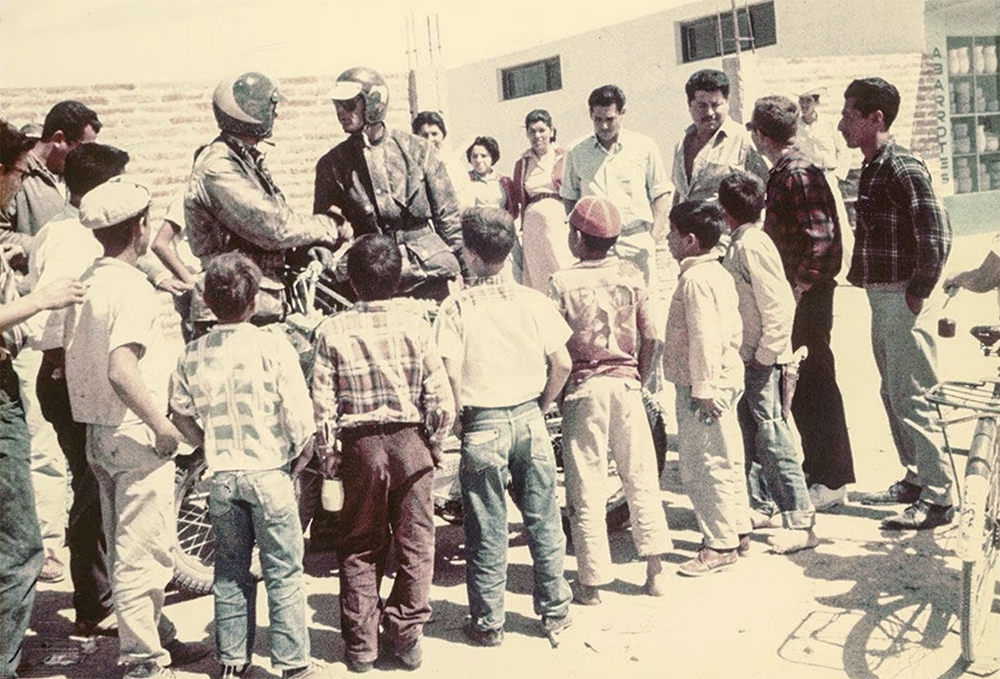
Bud and Dave Ekins have written their names in motorcycling folklore, but this was still when their careers were in their infancy. The boys had already made their mark as top contenders in off-road racing in California, but they hit an immediate snag. Bud was a Triumph dealer and factory racer, so obviously the idea of him doing anything to promote an upstart brand was frowned upon by Triumph. Dave had no issues, so they approached another desert racer, Bill Robinson Jr. (the son of the owner of Hollywood Honda), who jumped at the opportunity.
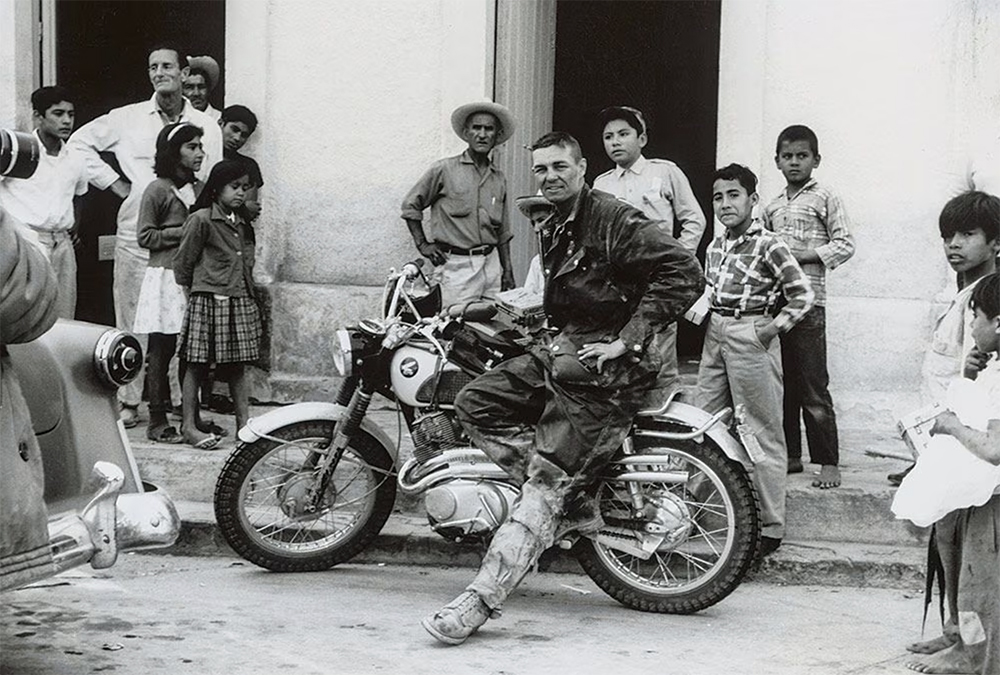
A fellow named Jim McLaughlin would fly his Cessna along the planned route as both a route spotter, and more importantly, keep the bikes fuelled and the riders fed. The route was planned by using 30-year-old Auto Club maps. The goal was to try and ride the 1000 miles in under 30 hours, a huge ask given the torturous route and logistical challenges. This was not a case of punching some destinations into your Garmin and off you go. This was still, dare I say it? A wonderfully analogue world.
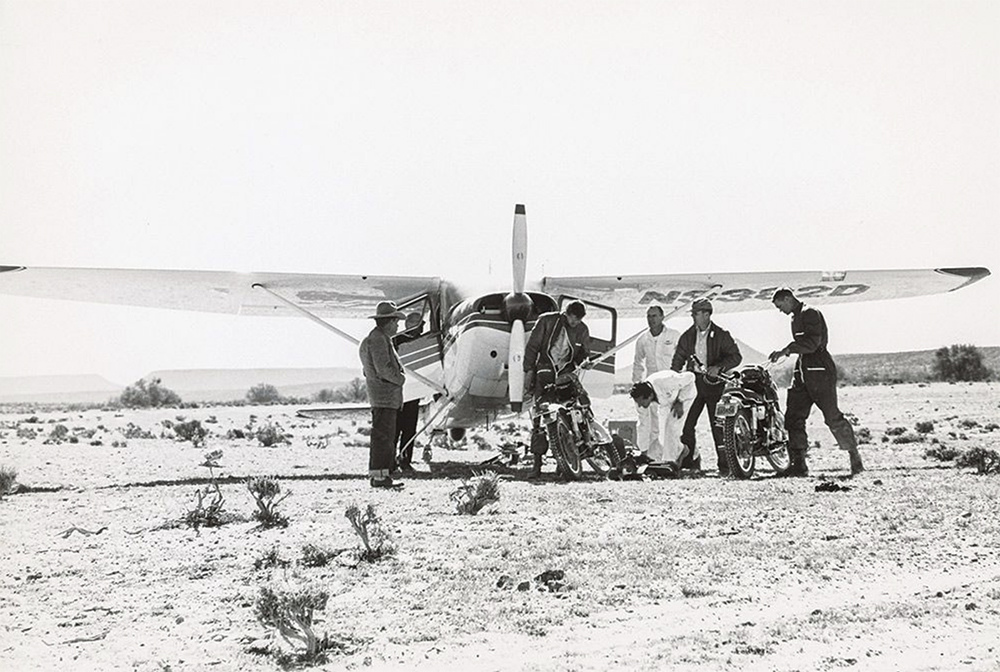
Let’s talk about the bikes. The Honda CL72 Scrambler was, by today’s standards, essentially a road bike with high-mounted twin exhausts exiting on the left-hand side of the bike. We are talking straight pipes with what they called “snufflers”. These were butterfly valves near the end of the pipes that could be opened for full power or closed to dull the throaty burble from the twin cylinder, twin carb, 180-degree crank, 247cc engine that delivered a full 24 hp at 9,000 rpm. Interestingly, a modern Honda CRF250 L makes 23 hp and is only 8 kilograms lighter than its 1962 ‘Grandpappy’. The bike had 19-inch wheels back and front and weighed a light 155 kg with its 10,75-litre tank filled to the brim. The other off-road concession was a high and wide cross-brace equipped set of handlebars. This qualified it as a ‘scrambler’, ’60s style.
Documenting the trip was the Editor of the fledgeling Cycle World magazine, Joe Parkhurst. The mag was literally three months old yet would go on to become one of the truly great American motorcycling publications. Joe went along in the Cessna as well as Bill’s dad, Bill Snr. The ride commenced at midnight on March 17th, 1962, leaving Tijuana, and soon riding through the desert by the light of a 1962 Honda headlight. The bikes had an extra gallon of fuel in a tank bag strapped on top of the tank. Things did not go smoothly from the outset. Both riders suffered multiple crashes and both bikes and riders emerged battered and bruised at dawn of the new day. Bill’s bike ruptured a carb rubber after a spill which eventually caused his little CL72 to hole a piston. Bill soldiered on with the plucky Honda running on one cylinder.
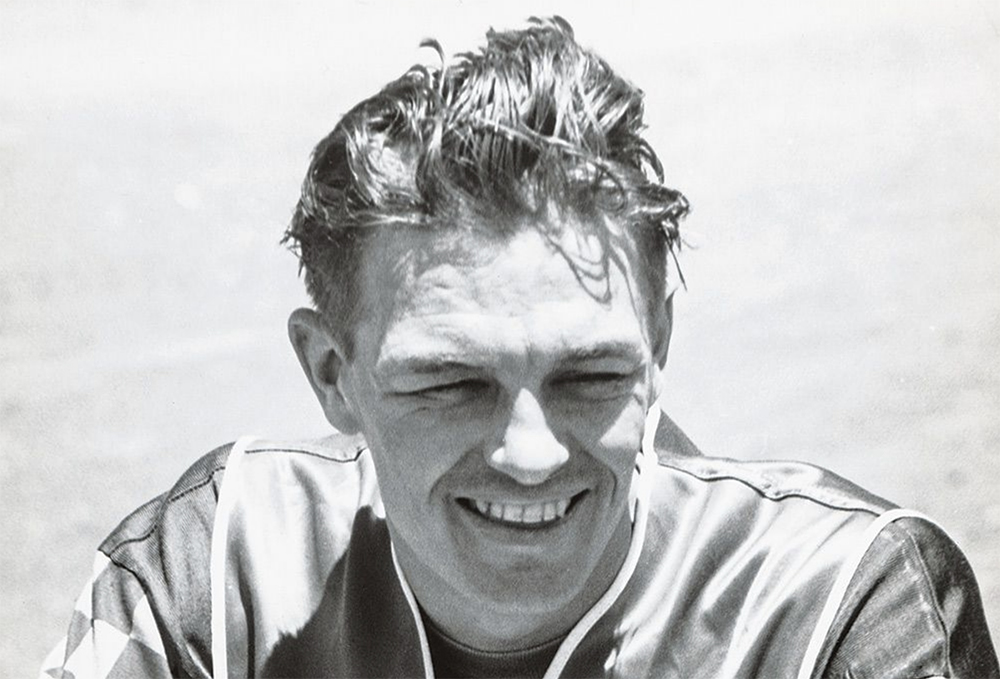
It was soon apparent that their 30-hour goal was rather optimistic, especially after a bank of fog rolled across the desert on night two, making celestial navigation impossible. The goal was revised to 40 hours. At one point they were alarmed to find that they were following a set of tracks that they soon realised were their own! They had ridden in a huge circle back to the same point. Dave’s bike was still running like a….well, a Honda, and after 39 hours and 52 minutes he rolled into La Paz. Bill limped in on his one-cylinder CL72 a few hours later. One of the first, and most amazing chapters in the history of adventure motorcycling had been written.
Did the advertising spin-off work for Honda? You betcha!! The CL72 morphed into the CL77 with a 305cc displacement. Between 1962 and 1968 Honda sold almost 90,000 of these brilliant and tough little bikes. They competed against, and often beat 650cc Triumphs amongst others, in hare scrambles, enduros, and flat-track events across America.
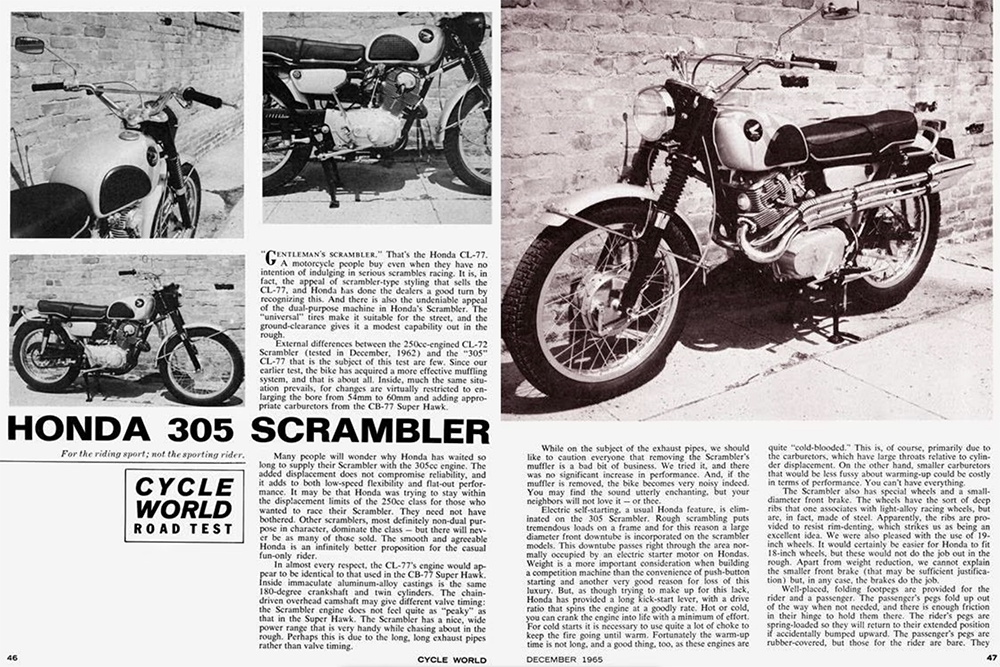
The Honda sun was firmly on the rise, and with a swathe of technologically superior bikes, culminating with the magnificent CB750 Four in 1969, it can truly be said that the 1960s saw a fundamental change in the world motorcycling landscape. Honda convinced Americans that “You meet the nicest people on a Honda”.
So, modern-day adventure riders, when you plan your next hardcore ride, spare a thought for two pioneers of your sport, racing two diminutive Hondas across possibly the most inhospitable desert landscapes in the Americas in the dead of night and beyond. Oh yes, lest I forget to mention. Many subsequent attempts to better Dave Ekin’s record led to the running of one of the most iconic desert races in the world. The Baja 1000.
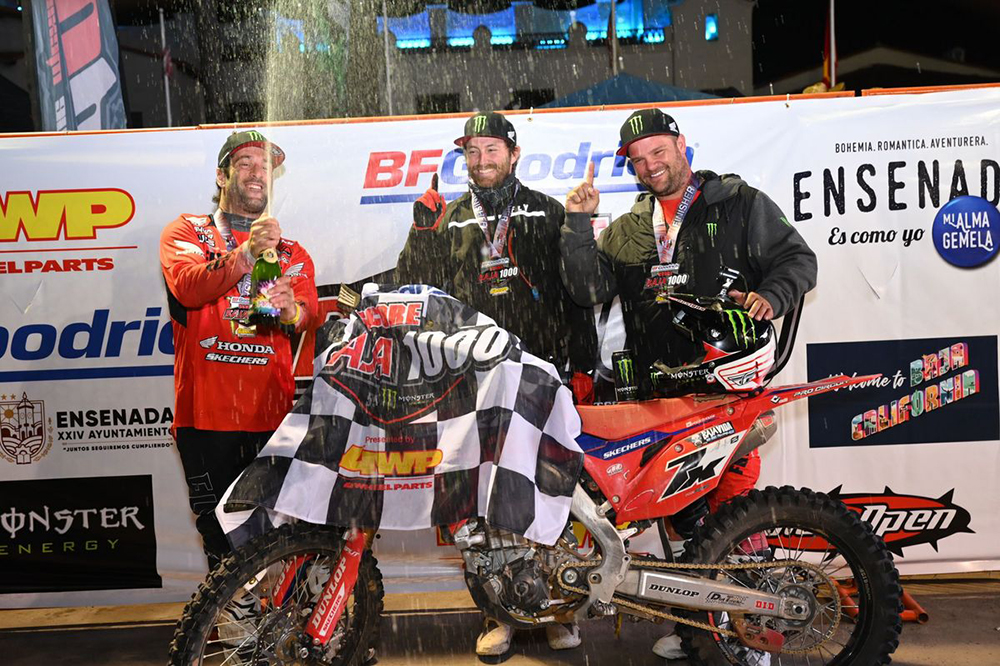
If you ever find yourself in downtown Los Angeles, pop into the Petersen Automotive Museum. In an exhibition entitled “Braving Baja – 1000 Miles to Glory”, you can read the story and see one of Dave Ekins’ racing CL72 Hondas on display. In South Africa, we got the later Honda SL 350, which was ridden to victory in the Roof of Africa by Barry Broady. Let us never forget that no matter what form our motorcycling takes, invariably we stand on the shoulders of giants that defined our lifestyle by doing remarkable things on remarkable bikes.
